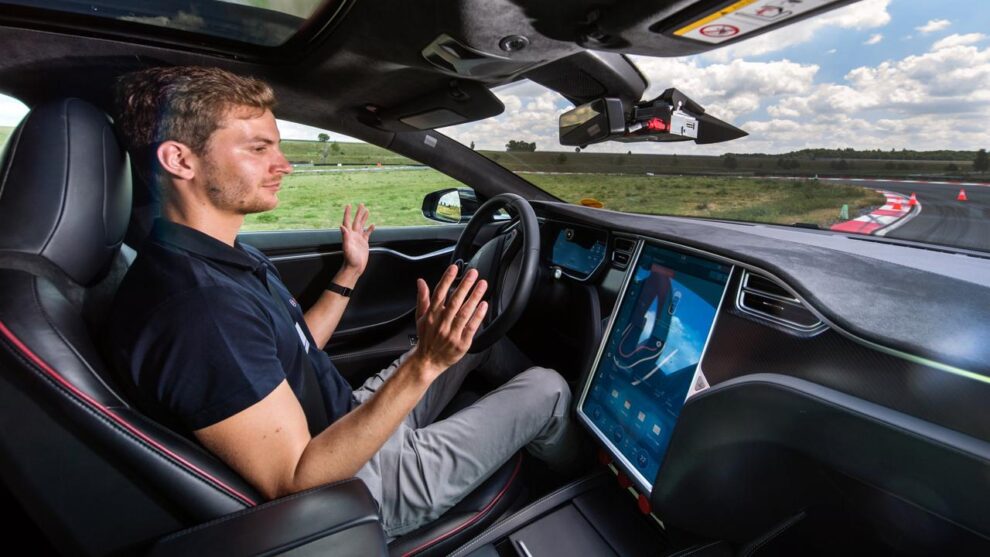The promise of self-driving cars has captivated imaginations for decades. Recently, this futuristic vision has rapidly accelerated from fantasy to tangible reality, with tech giants and automakers investing billions into developing autonomous vehicles. However, as these slick driverless cars cruise onto public roads, questions remain: Is the world truly prepared for the revolution they propose?
Cruising at Breakneck Speed: The Blazing Progress of Driverless Cars
The advancements in self-driving car technology have been staggering. Using lidar sensors, radar imaging, cameras, and GPS tracking, autonomous vehicles can capture a intricate 3D map of their surroundings. Powerful machine learning algorithms analyze this flood of data to mimic human driving decisions in real-time.
The performance results are impressive: self-driving cars can smoothly navigate highways by automatically maintaining safe distances, handling lane changes, and accounting for different speeds. In closed driving environments and simple urban settings, they demonstrate increasing skill at handling complexities like traffic lights, pedestrian crosswalks, parked cars, and more.
The Alluring Promise of Driverless Transportation
The tantalizing benefits of self-driving cars have accelerated their development:
- Improved safety with fewer accidents caused by dangerous or inattentive human drivers
- Increased accessibility for the elderly, disabled, and others unable to drive themselves
- Optimized traffic flow and reduced congestion from intelligent vehicle coordination
- Lower environmental impact with increased fuel efficiency and fewer cars on roads
- Urban transformation with less need for parking infrastructure
The economic implications are also staggering, with McKinsey estimating the potential value of driverless mobility technology at $7 trillion by 2030 if adoption matches recent hype.
Not All Smooth Turns: Challenges Facing Driverless Cars
However, beneath the glossy exterior of autonomous vehicles lurks a rugged landscape of unsolved challenges and concerns. While self-driving capabilities have sharply accelerated, full autonomous functionality across all environments remains unreliable compared to human judgement.
Technical Limitations and Safety Considerations for Self-Driving Cars
Handling complex urban environments with chaotic variables like unpredictable pedestrians, unreliable traffic signals, and erratic human drivers continues to strain self-driving systems. Additionally, rare and dangerous edge cases outside software parameters like accidents, sudden weather changes, or emergency vehicles can expose safety gaps compared to flexible human cognition.
Building trust in vehicle safety remains a crucial priority in development and rigorous real-world testing. As autonomous cars increasingly share roads with human-driven vehicles, they must handle all situations responsibly. Companies must commit to maximum public safeguards until driverless systems reliably equal or surpass human safety records across the full range of road variables.
Current Self-Driving Car Capabilities and Limitations by Automation Level

Most experts only consider vehicles reaching Level 4/5 automation as fully self-driving. While some autonomous features are available in models like Tesla’s, no car yet equals complete human functionality.
Navigating Ethical Concerns and Responsibilities
Additionally, unanswered ethical dilemmas loom around accountability and machine decision-making in unpredictable scenarios:
- Who shoulders responsibility in accidents: the driver, software developer, or vehicle owner?
- How do developers program the vehicle to prioritize safety choices impacting passengers, pedestrians, property damage in hazardous situations?
- Can self-driving software make ethical split-second life or death decisions as reliably as humans?
- How will autonomous vehicles and their extensive data collection impact personal privacy?
Resolving these philosophical debates requires thorough public discussion and regulatory standards to align machine learning systems with ethical societal values and prevent legal disarray.
Societal Concerns: Job Displacement and Inequality
On a societal scale, the proliferation of autonomous vehicles raises additional questions around equitable access and economic impacts:
- Job loss: Self-driving freight trucks threaten the jobs of over 1.7 million truck drivers in the US alone. Rideshare services and taxis also face major displacement from driverless fleet vehicles.
- Inequality: The high upfront costs of autonomous cars may initially only benefit society’s wealthiest, increasing mobility divides.
These concerns demand proactive policy discussions to smooth the transition period of autonomous vehicle integration to prevent massive unemployment or exclusion of lower-income communities.
Safely Navigating the Road Ahead for Driverless Transportation
Fully self-driving vehicles undeniably represent the imminent future of transportation. Yet actualizing their utopian promise also requires united efforts from technology visionaries, automotive companies, regulatory bodies, and the general public to address the formidable societal and ethical challenges ahead.
The Role of Developers: Rigorous Testing and Responsible Design
Technology teams face the colossal task of ensuring autonomous vehicles handle all complex real-world variables responsibly before public deployment. Honest assessments of current software limitations paired with extensive real-world testing is essential to map development priorities and build trust.
Engineers must also pioneer and openly discuss solutions to knotty ethical dilemmas embedded in self-driving software: How should cars be programmed to respond in dangerous high-stakes scenarios? Should maximizing passenger safety take priority over pedestrians in accidents?
Technology leaders who embrace responsible and transparent design practices will remain best positioned to steer the self-driving industry down the smoothest roads ahead.
Policymakers: Regulation and Forward-Looking Transition Planning
Federal and state governments also bear responsibility for constructing effective infrastructure both physically and legally. Developing standardized autonomous driving regulations and guidelines provides crucial guardrails to accelerate innovation while ensuring safety and ethics. Governments must also take initiative to assess and address the societal growing pains surrounding autonomous vehicle adoption through retraining programs and policies to avoid destructive job loss.
The Public: Constructive Dialogue and Openness to Change
Finally, the industry’s success relies on public acceptance and participant confidence in daily interaction with driverless vehicles. Openness to change and honest engagement around concerns can smooth the transitionary period. Meanwhile, the ongoing humble participation of average citizens as passengers and pedestrians provides invaluable real-world feedback to incrementally refine self-driving technology.
The Exhilarating and Precarious Road Ahead
Self-driving cars stand poised to revolutionize transportation and deliver dazzling benefits for society in the decades ahead. Yet realizing this future safely and ethically demands focused efforts from all stakeholders. Progress must balance headlong innovation with responsible testing and deliberate planning around societal impacts.
If technology companies, regulators, and citizens can navigate in partnership, autonomous vehicles can transform lives far more richly than solely eliminating drivers. Done right, their potential stretches beyond road travel to catalyze greener cities, increased accessibility, artfully orchestrated traffic, and saved lives across generations to come.
















Add Comment